Dealing with static cling on clothes can be incredibly frustrating. The sight of clothes sticking to your body or each other is uncomfortable and can ruin your outfit and confidence.
Fortunately, there are several effective methods to prevent static cling and restore the smooth, non-clinging texture of your garments.
In this article, we’ll explore the causes of static electricity in clothes and present a comprehensive guide on how to stop clothes from being static.
Why Do My Clothes Have So Much Static Cling?

Static cling occurs due to an imbalance of electric charges on the surface of fabrics. When materials rub against each other, negatively charged particles (known as electrons) are transferred between the fabrics. This creates an electrical charge that we know as static cling.
Some fabrics such as synthetic ones are more prone to this phenomenon than others. Low humidity levels and certain laundry practices can also exacerbate static cling issues.
If your clothes have a lot of static cling, it is likely due to one of these causes. And we can use our understanding of these causes to find an effective solution to static cling.
How Do I Stop My Clothes from Clinging with Static?
Static cling on clothes is an annoying problem, but it can be easily remedied with some simple techniques.
By increasing humidity, using fabric softeners, natural fibres, and anti-static sprays, as well as adapting your laundry routine, you can prevent static cling.
Each of these solutions is explained in detail below—use one or try a combination of several to find out which works for you. With these strategies in place, you can confidently step out in your favourite outfits without worrying about cling.
1. Increase the humidity
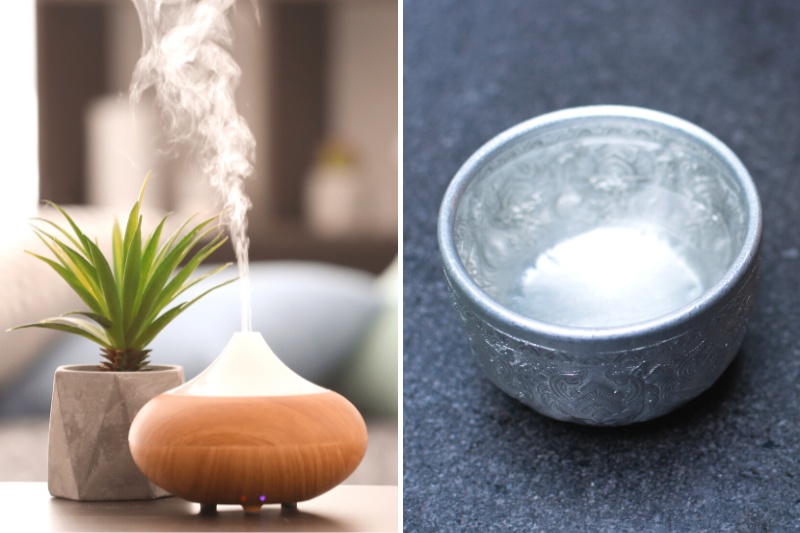
Static cling is more common in dry environments with low humidity levels. This is because humid air has a higher moisture content.
Water is a natural conductor and can ground static charge, preventing it from causing your clothes to cling, whereas a low-humidity environment does the opposite.
Therefore, a straightforward solution to static cling is to increase the humidity in your home, which will help neutralise the electric charge on your clothes.
Using a humidifier is the preferred option, but keeping a bowl of water in the room can also effectively do the job.
2. Dry your clothes naturally

Tumble-drying clothes can strip them of moisture, making them more susceptible to static electricity.
Consider air-drying your garments instead of throwing them in the dryer. This helps preserve their natural moisture and reduce static buildup.
If you must use a tumble dryer, consider using dryer balls. Some of our favourite tumble dryer balls include OrgaWise Wool Dryer Balls and the Whitmor Dryer Balls. Alternatively, you can add a damp cloth to the load to increase moisture or a ball of aluminium foil.
3. Add vinegar to your laundry routine
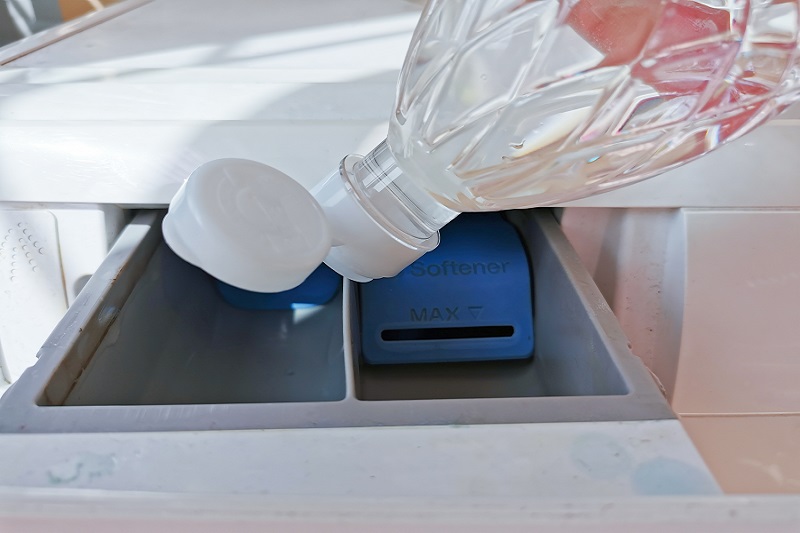
White vinegar can work wonders in preventing static cling on clothes and garments. Add half a cup of white vinegar to the rinse cycle when doing laundry to help remove detergent residues and neutralise static charges. The result is softer, static-free clothes.
Adding white vinegar to your laundry also carries additional benefits. It can help to brighten whites, remove unpleasant odours, and reduce colour fading.
Your washing machine benefits, too—vinegar helps to remove limescale, soap scum, and mould, ensuring your appliance functions effectively.
4. Use fabric softeners
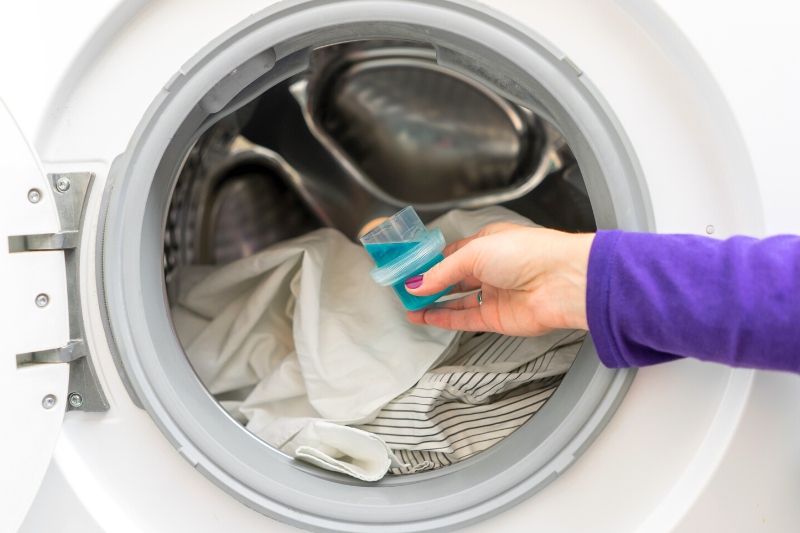
Fabric softeners not only make your clothes feel softer but can also help prevent static cling. It does this by lubricating the fibres so that the material glides past each other rather than rub—as static is caused by friction between your garments, the amount of static is reduced the softer they are.
Look for a fabric softener that specifically targets static, and use it during your laundry routine. Also, you can use fabric softeners in combination with white vinegar. This is a killer combo for tackling static cling on your clothes while making your clothes smell clean and fresh.
5. Try anti-static sprays
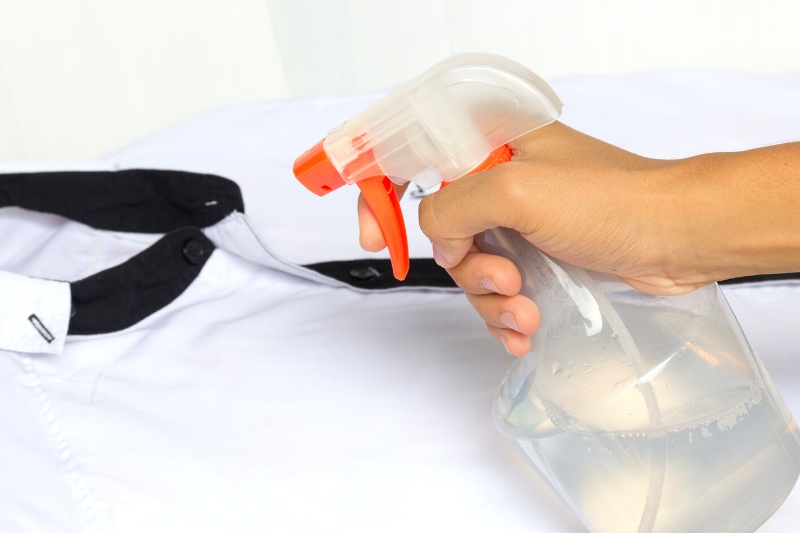
Commercial anti-static sprays such as Caraselle Anti-Static Spray are available in shops and online from retailers like Amazon. They are relatively affordable and can be a quick and effective solution to tackle static cling on clothes.
To use, simply spray the product on your garments before wearing them to eliminate static.
The moisture helps to neutralise the electrical charge. If you struggle with static cling throughout the day, you can also keep a bottle of anti-static spray in your handbag for use on the go.
6. Buy clothes made from natural fibres

Synthetic fabrics attract and hold onto static cling more than natural fibres. This happens because natural fibres tend to be more moisture-retaining materials, whereas synthetic materials are usually fast-drying. This makes natural materials slightly conductive and less likely to hold electrical charge.
To reduce the static cling issues you’re facing, always opt for natural fibre fabrics like cotton when shopping for new clothes.
As these materials are less likely to generate static electricity than synthetic fabrics like polyester and nylon, you might not need to use any other preventative method.
7. Moisturise your skin
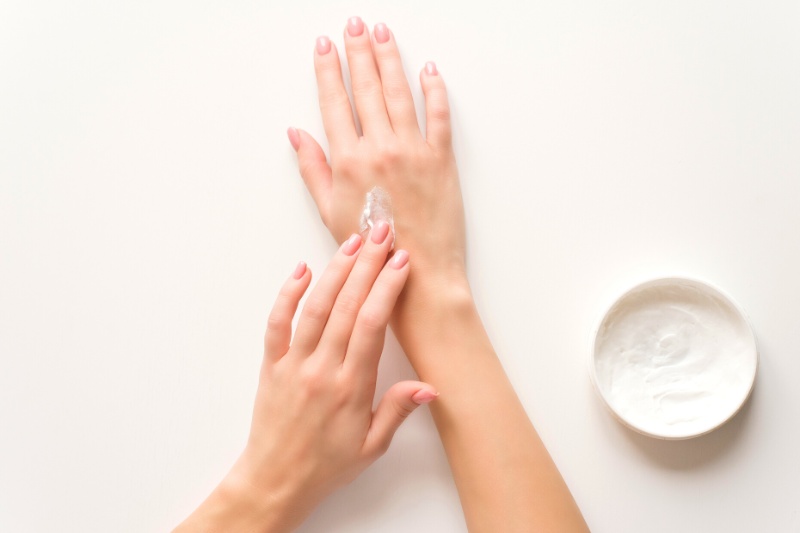
Static cling sometimes occurs due to dry skin. Therefore, rather than fixing your laundry practices, you can instead make a change to yourself by moisturising.
Moisturise your skin regularly to prevent it from acting as a conductor of electricity between your clothes and body.
You can also keep a small tube of hand cream in your bag for when you’re out and about. If your clothes are clinging to a specific area of your body, apply the lotion directly to the spot. Once the moisturiser has soaked into your skin, your clothes will be static-free.
8. Discharge your clothes using metal objects
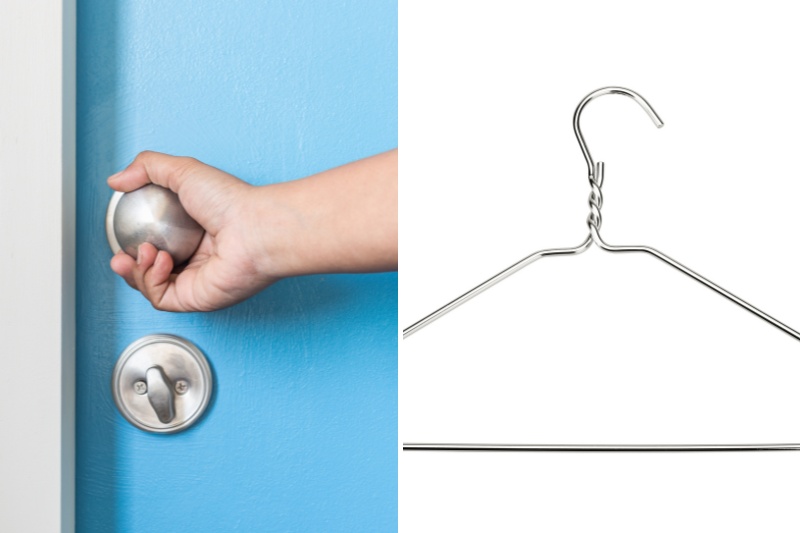
If you often experience static cling after removing clothes from the dryer, try grounding yourself before touching the garments.
You can do this by touching a highly conductive object like a metal doorknob. This will discharge any excess static electricity from the clothes and your body.
You can also use a wire coathanger to a similar effect. Take the metal hanger and run it along the inside of your clothes.
The electrical charge from the fabric will be transferred to the more conductive metal object, removing the static cling. This works particularly well for silk and satin shirts.

Hannah has a passion for cleaning. She worked her way around Australia by cleaning hostels in exchange for free accommodation and used her cleaning skills to bag a job as a chalet host for a luxury ski company in France.






